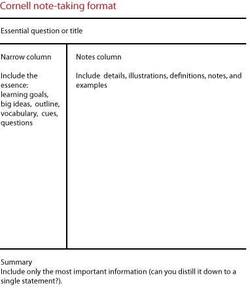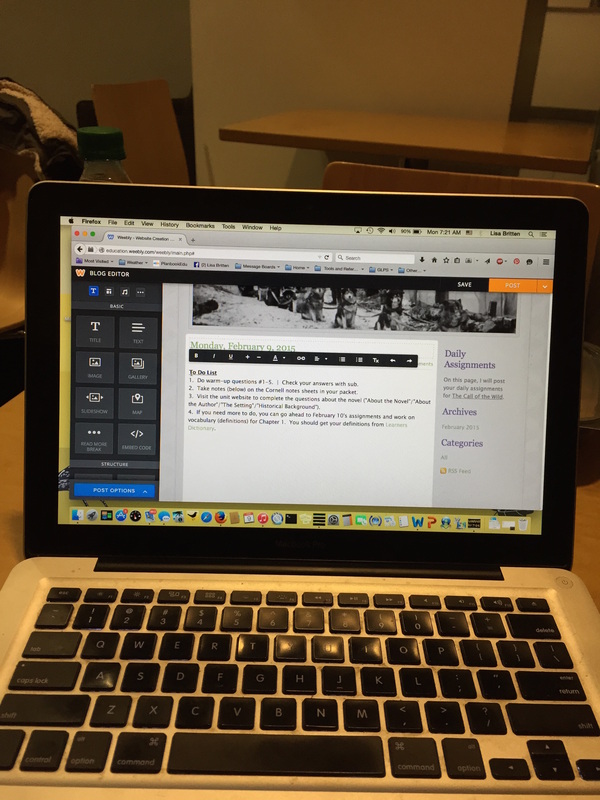 Good morning from Cleveland Clinic! My husband should be heading into the operating room at any moment. I'll let you all know how it went tomorrow. :) To the right is an example of how to set up your Cornell notes. Put literature terms and big ideas in the column to the left, and put your notes in the notes column directly to the right. Cornell Notes **Please add the following to your Cornell notes for today.**
The information in purple doesn't need to be written in your notes. It's some extra information that you can look at to help you understand certain concepts better. setting - the time and place where a story occurs anthropomorphism - the showing or treating of animals and objects as if they are human in appearance, character or behavior epigraph - a piece of writing, short phrase, etc. that is used as an introduction to part of a book; epigraphs are usually related to the theme of the piece of literature that they precede Example: The epigraph from The Call of the Wild is the first stanza of a poem by John Myers O'Hara called "Atavism". Old longings nomadic leap, Chafing at custom's chain; Again from its brumal sleep Wakens the ferine strain. Mrs B's Note: **For a summary of what this stanza means, click here.** After we read the novel, we'll take a closer look at the epigraph and you'll see how it's hinting at what will happen later on during the book. :) atavism - the tendency to revert to ancestral type. In biology, an atavism is an evolutionary throwback; traits reappear which had disappeared generations before. Beginning The Call of the Wild with a poem called "Atavism" foreshadows what is going to happen to the main character, Buck, over the course of the novel. If you're interested in learning more, and seeing some real-life examples of how this works with animals, check out this "How Stuff Works" article on atavisms. foreshadowing - a literary device by which an author hints what is to come naturalism - a literary movement or tendency from the 1880s to 1930s that used detailed realism to suggest that social conditions, heredity, and environment had inescapable force in shaping human character. Example: Buck's environment and heredity (his instincts and the tendency for atavism to occur) will shape his character as the novel progresses.
1 Comment
Leave a Reply. |
Daily Assignments
On this page, I will post your daily assignments for The Call of the Wild. ArchivesCategories |

 RSS Feed
RSS Feed
